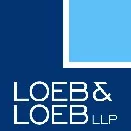The Securities and Exchange Commission and the Commodity Futures
Trading Commission, on October 31, 2011, released final rules
relating to Form PF pursuant to authority granted by the Dodd-Frank
Wall Street Reform and Consumer Protection Act. The final rule and
Form PF will enable the Financial Stability Oversight Council to
obtain data that will facilitate the monitoring of systematic risk
in U.S. financial markets. The frequency and content of the
required filing is based on the type and size of the adviser.
The most significant aspects of the new rule are:
- Investment advisers with under $150 million in regulatory assets under management are exempt;
- All private equity fund advisers required to file will need to file on an annual basis rather than quarterly;
- Only large hedge fund advisers (over $1.5 billion) and only large liquidity fund advisers (over $1 billion) must file a more detailed Form PF quarterly; and
- Only large private equity fund advisers (over $2 billion) must file a more detailed Form PF annually.
An investment adviser must file a Form PF if it: (1) is
registered or required to register with the SEC; (2) advises one or
more private funds; and (3) has at least $150 million in regulatory
assets under management attributable to private funds as of the end
of its most recently completed fiscal year. Reports on Form PF are
generally confidential, though the SEC may use Form PF information
in an enforcement action.
Large hedge fund advisers, or hedge fund advisers with $1.5
billion in regulatory assets under management (increased from the
proposed $1 billion), must file detailed quarterly reports within
60 days after each quarter. As proposed, large hedge fund advisers
will have to disclose additional information for each hedge fund
that it advises that has a net asset value of at least $500 million
as of the end of any month in the prior fiscal quarter. Medium
hedge fund advisers, or hedge fund advisers with at least $150
million in regulatory assets under management, must file less
detailed annual reports within 120 days after each fiscal
year.
Private equity fund advisers, regardless of size, are required to
report annually to the SEC within 120 days after the close of each
fiscal year, a less stringent requirement than the proposal that
private equity fund advisers with $1 billion in regulatory assets
under management would need to provide detailed quarterly reports.
However, large private equity fund advisers with at least $2
billion in regulatory assets under management must file a more
detailed report.
As proposed, managers of liquidity funds with $1 billion in
combined regulatory assets under management must report quarterly
information about investments and risk profile within 15 days after
the close of each quarter. An adviser managing liquidity funds must
combine liquidity fund and registered money market fund assets for
purposes of determining whether it meets the threshold for the more
extensive reporting requirements regarding its liquidity fund, but
is only required to report information about unregistered liquidity
funds.
Most private fund advisers that are required to file Form PF will
only need to complete section 1 of the form. However, large hedge
fund advisers, large liquidity fund advisers, and large private
equity fund advisers will be required to complete certain
additional sections.
Advisers must test whether their hedge fund or liquidity fund
assets meet the relevant threshold as of the end of each month (as
opposed to daily, as was proposed). Advisers must test whether
their private equity fund assets meet the relevant threshold at the
end of each fiscal year (as opposed to quarterly, as was proposed).
In calculating assets under management, an adviser generally must
aggregate parallel managed accounts and assets of private funds
advised by any of the adviser's "related persons"
other than related persons that are separately operated.
Advisers with at least $5 billion in private fund assets must make
an initial filing after the first fiscal year or quarter end, as
applicable, occurring on or after June 15, 2012. All other advisers
must make an initial filing after the first fiscal year or quarter
end, as applicable, occurring on or after December 15, 2012.
The content of this article is intended to provide a general guide to the subject matter. Specialist advice should be sought about your specific circumstances.


